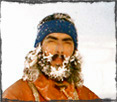
(For lazy bustards, a 62 words version is also available)
We spent many Saturdays on the Black Dolores: cherished family moments that we will forever miss and which will never come again. Even the closing scene of my first film, weaving a story of death, freedom, and a new beginning, was shot during such a day of family sailing.

A picture depicting a boat surrounded by penguins and ice, hung in the yacht’s parlor and was something my father used to tell the legend of the four Frenchmen and ‘Kim Of The Antarctic’. He was, however, a bit gray on how much truth was in this story and how accurate his facts were.
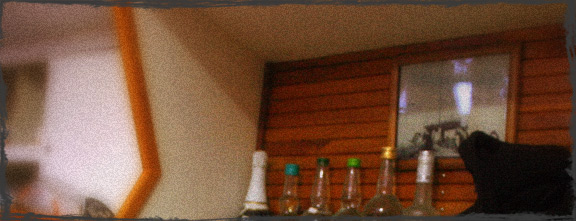
On August 7, 2008, my father was killed in a plane crash. His sudden death threw our lives into turmoil. We no longer had the father who always told us which ropes to pull and when to raise the sails. One of the hardest decisions we faced was putting Black Dolores up for sale. Second only to my mother, Black Dolores was my father’s great love. But there remained no real seamen among us and we had to find her a new owner.

My two older brothers had returned home to New York and I was left with the boat. As part of the effort to sell, I decided to research the yacht’s origins. I was surprised to discover a new website that featured a DVD edition of Kim in Antarctica, a film documenting the story of Kim and the four Frenchmen. I was pleased at least to have this souvenir – a copy of the story that my father so loved to tell:
In the late seventies, four young Frenchmen decided to fulfill a dream and spend the winter in Antarctica. They built a small, steel yacht and named her “Kim”, after Rudyard Kipling’s tale of adventure. Not one of the four men was a sailor – Michel, Claude and Daniel were professional sidecar racers, and Bruno was a rising star of the French ski circuit. Rumor had it that Kim was the first boat the four ever sailed on.
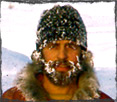
Claude Monchaud
|
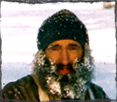
Daniel Gazanion |
|
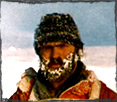
Bruno Maroux
|
In 1981 (the year I was born) they reached their destination. The sea froze them in and they spent nine months on the ice with Kim – the smallest boat to ever spend the winter in Antarctica. Their travels and heartwarming encounters with the incredible wildlife of the South Pole are documented in this breathtaking film, shot by Bruno.
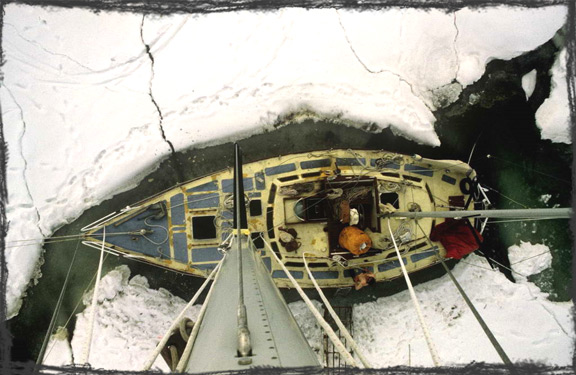
Upon returning to France they set out on a new journey: a tour in which they told their story and screened the film. Being avid fans of sailing, the French received the men as heroes. With the money raised from the tour they built four new boats, exact replicas, one for each sailor. Despite their careers as competitive sportsmen, their new love for the sea trumped their desire to ride this sudden wave of fame: in 1986, Claude and Daniel, who had already started families, decide to leave the fame behind and set out into the unknown. Michel sailed back to New Zealand to search for the love of his life. Overwhelmed by the emotional stress of passing fame, Bruno never left France and ended his life in a mental hospital.
Six years later, after an enchanted journey with their families through the exotic islands that lie between Africa and the United States, Claude and Daniel sold their boats and headed back home to France. Tikaï, Claude’s boat, was sold in Seattle to Mikael Glattes, a Swede who was working in the States as an assistant cameraman. Daniel sold his boat, Mowgli, to Peter Swaisland, a Canadian who decided to take his wife and kids on a trip around the world.
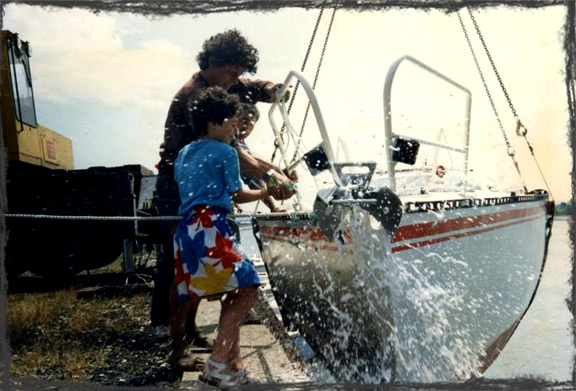
Peter and his family crossed the Pacific with the ultimate intention of sailing to France, thereby completing the yacht’s circumnavigation. In 1992, after a three and a half year journey, they crossed the Suez Canal and arrive in Israel, at the Ashkelon marina, approximately one year after my father had finished building it. Just hours after their arrival, the phone rang at our home in Tel Aviv. On the other end of the line, the manager of the marina squarely said: “I found what you’ve been looking for” - a uniquely built, aluminum boat that my father could not resist. After my father promised that he would someday fulfill Peter’s dream of taking the yacht to France and completing her twenty-year journey around the world, Peter agreed to sell him the boat for the price of four plane tickets to Vancouver and all the compensation my father had received after a work accident in which he lost part of his left arm. Just before going separate ways, Peter told my father the little he knew about the four Frenchmen and the original boat, Kim.
With me remain many images and pleasant memories of the perfect summer days spent aboard the Black Dolores (the name my father gave Mowgli after a character from a Damon Runyon story). Every year my parents sailed it to Cyprus and to the enchanted bays of Turkey, returning with piles of photographs of which we were only allowed to see a select few.
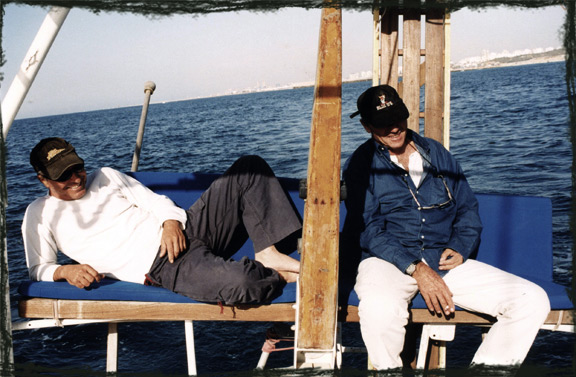
In 2003, the love story between my father and Black Dolores nearly hit an iceberg when my father decided he needed an upgrade and went searching online for a new aluminum boat. In his search he came across a yacht, a perfect twin of Black Dolores. It was Tikaï. Mikael Glattes was killed in a plane crash while shooting a commercial in the Canadian glaciers.

This discovery piqued my father’s interest in knowing more about the familial history of his boat. This search led him to the website of Kim’s new owners, an American from Missouri who decided to fix up the original boat and to tell its story. In a letter to the American my father described what he knew about our boat’s previous owners and mentioned the promise he had made to sail it back to France. The American promised to send us a copy of the Frenchmen’s film, but it never arrived. My father decided to abandon his search for a new boat, telling us that he felt Black Dolores was asking him to stay with her and keep his promise.
My father did not get the chance to fulfill this promise, and now, after his death, I am a credit card number away from the film he so wanted to see, but a technical malfunction prevents me from placing the order.

I write to the owners of the website, telling them about my father and Black Dolores, asking to buy a copy of the film. The email I get in response brings on a shiver of excitement and sadness. The writer is Morgan, Claude’s youngest son, who spent his childhood between Mowgli and Tikaï. In the email, he includes a link to the life story of the boats, told in pictures, from the day the four replicas were built to the day they were sold. For many long minutes I stare at each photograph. I can’t stop smiling even as tears cloud my eyes. I try to imagine my parents retiring from their careers and, with Black Dolores, setting out on journeys to exotic places they never dreamed they would visit. And then something incredible catches my eye – Daniel’s hand – just like my father, with the same missing fingers, the same left hand, and once again fate gets the last laugh. I suddenly feel just as my father felt before me: my new boat is calling for me, asking to fulfill my father’s promise.
Now the telephone rings and they’re telling me to come quickly – the wind is raging and Black Dolores has torn the ropes that tie her to the dock. They try to explain that a boat is a living creature: she needs constant care. I want to tell them: this boat is a living creature and she’s asking me to take her to France.
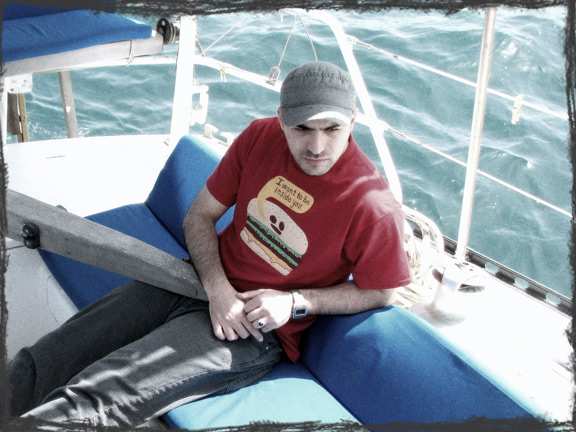
Director’s statement
After a decade of documentary film making, I wanted to work more with scripted materials. But now it’s clear that fate is calling me back for one last documentary. I want to make a different kind of film, an unknown documentary. I aspire for it to be a piece taught in film schools, a film that will take the viewer through an audio-visual, emotional and intuitive experience so he will feel like he himself is going on a voyage. A voyage that deals with faith, memory, grief, and death; just like sailing a boat in the middle of the ocean sometimes feels like death.

The sail will serve as the narrative backbone of the film, from which we will tell the stories of the past - the stories of individuals and families, that the fates of near strangers and complete strangers are woven into one another.
Cyprus will be the first stop of the voyage. There, I will attempt to relive my father’s last moments on earth. In the Greek islands, we will meet Thierry, a French sailor who would like to buy Black Dolores to take him to Antarctica. In Italy, my two older brothers, the stars of my first film, will board the boat; Only this time, roles will be reversed and I will take the lead. In Marseille, my mother will join us, sailing for the first time since my father’s death. With the family complete, we will sail directly into the arms of Claude, Daniel and their families, who are anxiously awaiting the return of the boat - once their home for their most beautiful years.

As they have been for years, Claude and Daniel will tell the story of Kim and that legendary winter in Antarctica, while their film is projected in the background.

Dreams starring my father since he died, and dreams to come on the voyage, will reawake on the movie screen, giving a peak into the fantasy world created in the subconscious.
Using the audio from a 60 year old radio show, Black Dolores, by Damon Runyon, we will animate the story; Dolores’ character will be designed using my mother’s visage, just like my father envisioned.

Hundreds of emails written by my father to his children, my mother, and her girlfriends, in his rich and unique language, will help me draw his character the way he wished to be remembered, even if I only achieve an outline.
The voyage will end on August 7th, 2009 in the Kibutz Einet cemetery; this will be the one year anniversary of the day our lives changed forever.

When I wanted to leave the military, my father didn’t overtly object, he only asked me what would happen when I would have to face a difficult situation. Now that I wish to live in my father’s world, I have chosen to take myself to the edge, a physical and emotional journey, in which I will choose to consciously avoid making compromises and taking shortcuts. I want to finish this voyage exhausted, bruised and wet to prove to my father, here, I can.
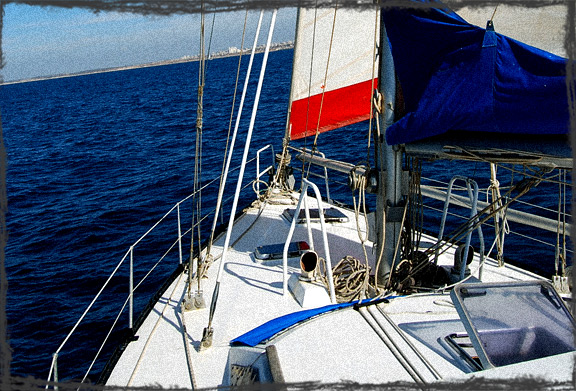
© 2009 all rights reserved






